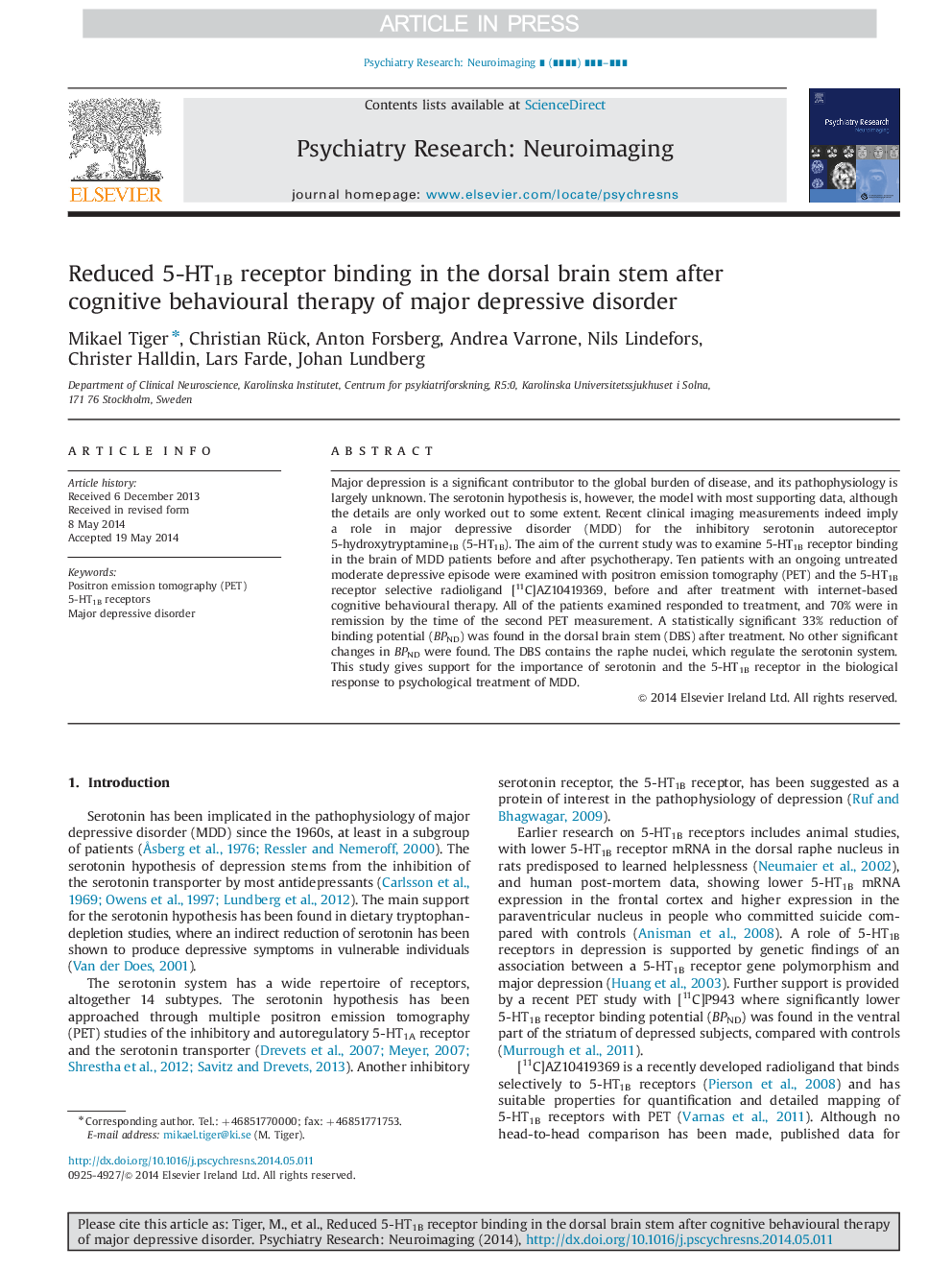| Article ID | Journal | Published Year | Pages | File Type |
|---|---|---|---|---|
| 10305392 | Psychiatry Research: Neuroimaging | 2014 | 7 Pages |
Abstract
Major depression is a significant contributor to the global burden of disease, and its pathophysiology is largely unknown. The serotonin hypothesis is, however, the model with most supporting data, although the details are only worked out to some extent. Recent clinical imaging measurements indeed imply a role in major depressive disorder (MDD) for the inhibitory serotonin autoreceptor 5-hydroxytryptamine1B (5-HT1B). The aim of the current study was to examine 5-HT1B receptor binding in the brain of MDD patients before and after psychotherapy. Ten patients with an ongoing untreated moderate depressive episode were examined with positron emission tomography (PET) and the 5-HT1B receptor selective radioligand [11C]AZ10419369, before and after treatment with internet-based cognitive behavioural therapy. All of the patients examined responded to treatment, and 70% were in remission by the time of the second PET measurement. A statistically significant 33% reduction of binding potential (BPND) was found in the dorsal brain stem (DBS) after treatment. No other significant changes in BPND were found. The DBS contains the raphe nuclei, which regulate the serotonin system. This study gives support for the importance of serotonin and the 5-HT1B receptor in the biological response to psychological treatment of MDD.
Related Topics
Life Sciences
Neuroscience
Biological Psychiatry
Authors
Mikael Tiger, Christian Rück, Anton Forsberg, Andrea Varrone, Nils Lindefors, Christer Halldin, Lars Farde, Johan Lundberg,
